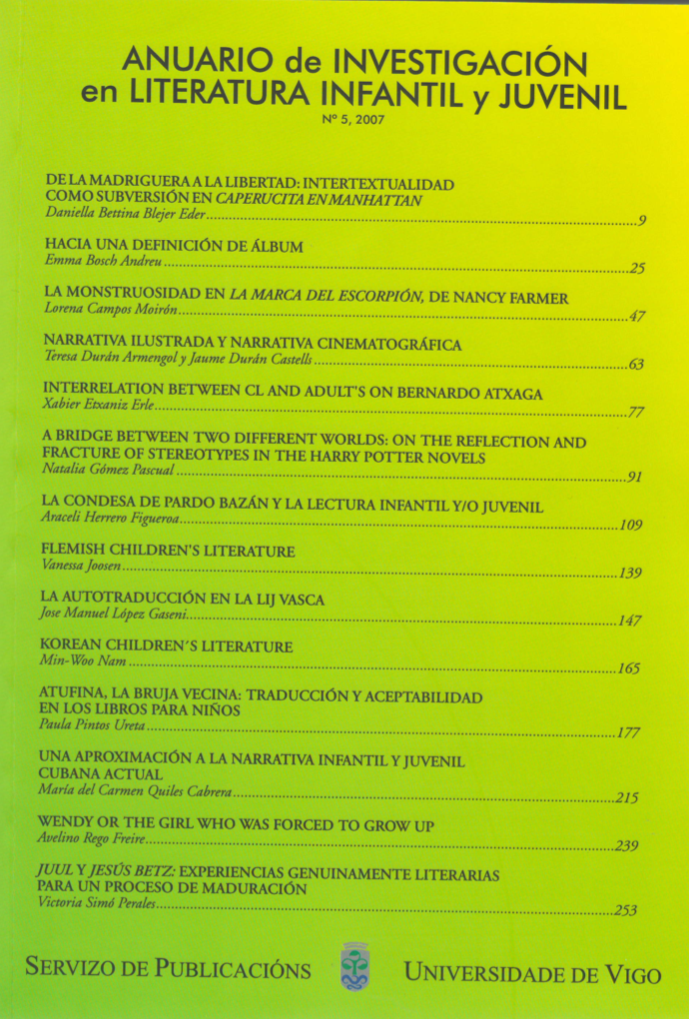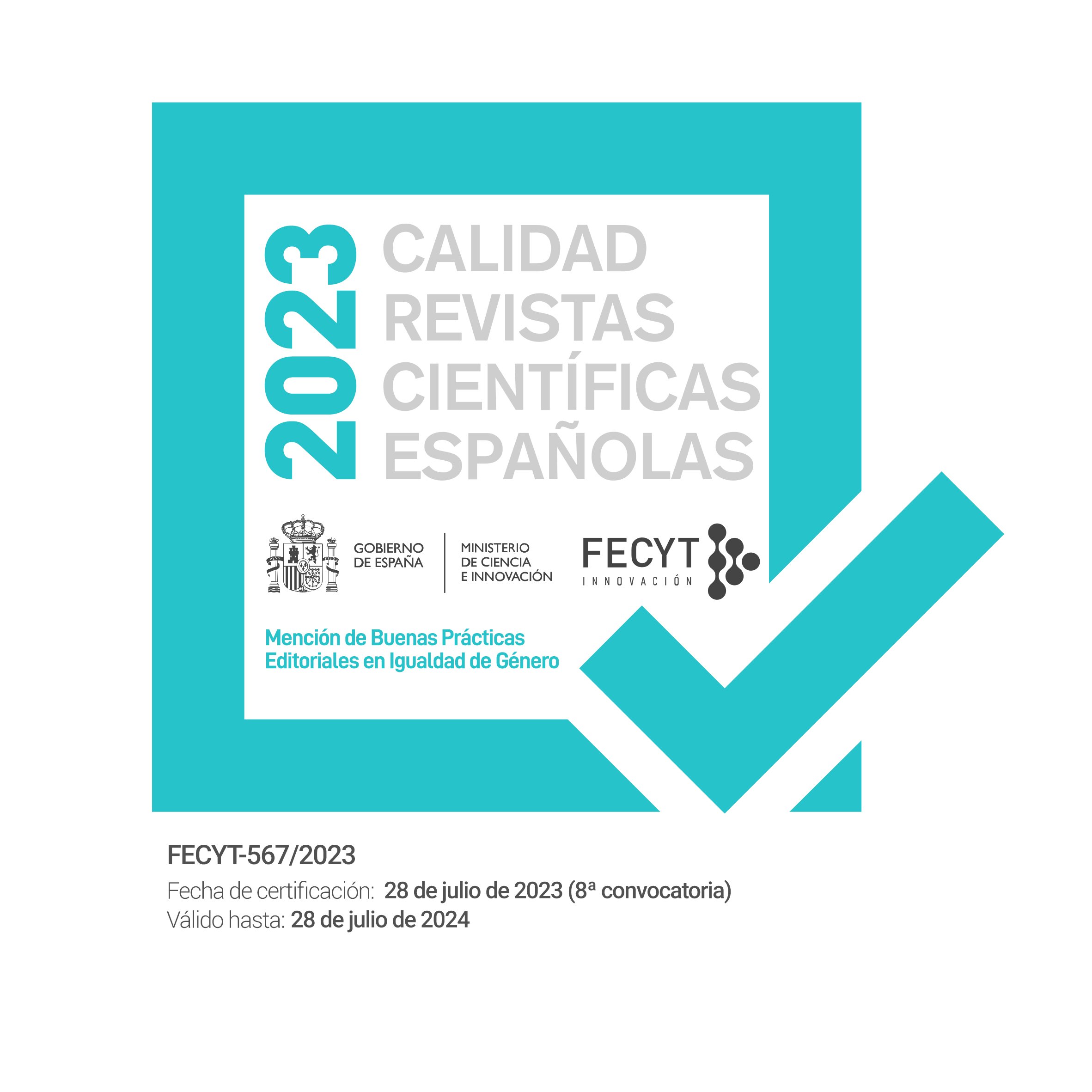A bridge between two different worlds: on the reflection and fracture of stereotypes in the Harry Potter novels
Keywords:
gender identify, fracture of stereotypes, gender differences, Harry Potter novelsAbstract
The unprecedented success of the Harry Potter series in the history of childrer's and juvenile literature has been a controversial topic among scholars. The Harry Potter phenomenon (so-called Portermania) has assembled fans and academia together around the world. Events such as Nimbus 2003, Accio 2005, Patronus 2006, Sectus 2007, of international relevance, aim at determining the role played by the Potter novels among youngsters living in a society with a marked growth of consumerism. Some of the analyses carried out recently (Zipes 2002, Whited 2002, Gupta 2003, Heilman 2003, Lurie 2004, Blake 2005), share a common interest in framing this bestseller either as an element of the compendium of works acknowledged to be “quality literature” or else as an example of paraliterature . Furthermore, the question is raised as to the readers implied need to find a behavioural model. Do they really look for a sociological paradigm of their society or do they simply seek fun in their spare time? 1 will make an attempt to differentiate these aspects of quality literature in relation to the potential ties to linguistic patterns. A brief analysis of the narrative structure and the language used by the author in the first and second books will be carried out. The angle of observation will be gender identity. Above all, the reflection or, by contrast, the fracture of gender stereotypes will be the point of departure by examining adjectives, verbs — activity verbs, communication verbs, mental verbs, causative verbs, verbs of simple occurrence, verbs of existence or relationship and aspectual verbs — , adverbs and so on. In sum, Rowling seems to make use of a very clear differentiation between Muggles and the magic world represented in the books as a tool for developing the narrative stream by means of either considering gender stereotypes or refusing their presentation. This seems to be an invitation of the author for the audience to cross the bridge of their mental schemata and walk across two different worlds. The main challenge is to reconstruct the inherent characteristics associated to the romantic notion of the hero and, as a consequence, depriving him of a superhero element.
Downloads
Downloads
Published
Issue
Section
License
Anuario de Investigación en Literatura Infantil y Juvenil has been published in open access from 2019 (vol. 17). The journal allows the authors to retain publishing rights. Authors may reprint their articles in other media without having to request authorization, provided they indicate that the article was originally published in Anuario de Investigación en Literatura Infantil y Juvenil. The journal holds the copyright of printed issues (volumes 0-16).





